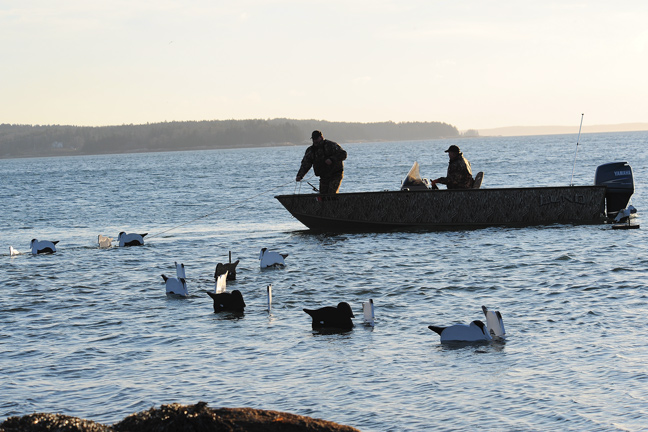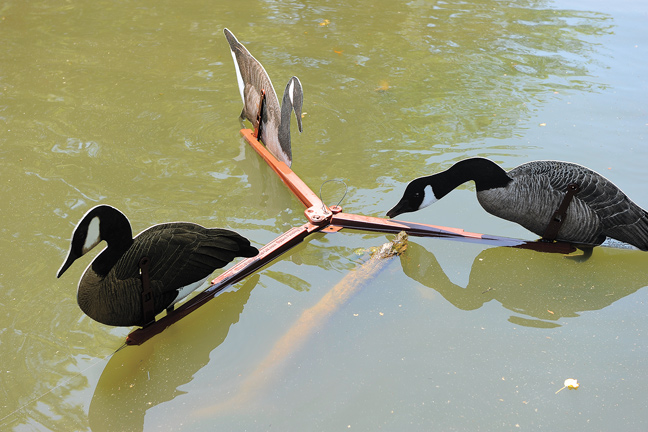Want to triple your floating decoy spread with the effort of setting one decoy? Want decoys that take up little room in the boat? Try V-boards.
I first encountered V-boards when I guided on Maryland’s Eastern Shore during the 1970s and 1980s. We used them exclusively on water, but there’s no reason they can’t be used on dry land. They’re actually shaped like a big letter Y when deployed, but history has called them V-boards since their inception. They carry three goose or duck decoys on the extended arms, yet fold into a compact bundle for transportation.
The bottom arm of the Y carries one decoy and the anchor attachment, and the trailing arms carry the two additional silhouette decoys. These trailing arms are hinged in what Eastern Shore watermen call the “gearbox.” It takes some time to build, but it works well.

If you hunt saltwater or brackish water, marine brass or stainless-steel hardware is essential. Freshwater is more forgiving, but brass or stainless steel is often worth the added expense for longevity. It’s also a good idea to glue all the parts with marine glue.
Often, it is easier to attach the silhouette decoys after painting the arms and before assembling the gearbox. Rig a length of cord and relatively heavy anchor, depending on the conditions in which you hunt, and attach it by a horizontal hole through the leading arm or screw eye in the front of the arm to hold the V-board in place.
Making V-boards is a lot of work, but once you have a pattern, it’s relatively easy to production-line manufacture.
Filling Out a Spread
Don’t want to go to the trouble of making them yourself? Sitting Ducks Ltd. offers ready-made V-boards. Formed from tough plastic, they come four to a package. Other than attaching three silhouette decoys plus an anchor and line, they are ready to go.
The arms lock into the closed or open position by a locking pin thoughtfully attached to the V-board with a short length of cord. Once opened and pinned in the open position, the decoy mounting posts are rotated up and the decoys attached.
If you use commercially available silhouettes such as Real Geese, their stake punch-outs will match the supports molded into the plastic mounting posts. Even if the decoys seem securely held, it will save you trouble if you stabilize them with at least one of the supplied screws.






